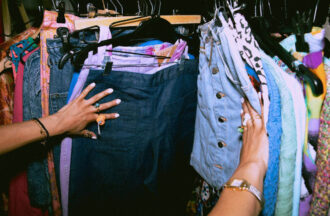
A Look at the Clothing Resale Market
The fashion industry has long been associated with rapid trends, fast fashion, and a throwaway culture that contributes to environmental degradation. However, in recent years, there has been a growing awareness of the detrimental impact of the fashion industry on the environment, and consumers are increasingly seeking more sustainable options. With inflation at some of the highest levels in decades, budget constraints have pushed more people towards second hand clothing. This has given rise to the clothing resale industry, which has gained traction as a viable solution to reduce waste, promote sustainability, and provide cost effective options during difficult economic times. With rapid growth in the horizon, we explore the future of the clothing resale industry and how it is poised to reshape the fashion landscape.
The clothing resale industry, also known as secondhand or pre-owned fashion, involves the buying and selling of used clothing and accessories. This can be done through various channels, such as thrift stores, consignment stores, online marketplaces, and even high-end luxury resale platforms. The concept of buying secondhand clothing is not new, but what has changed in recent years is the way it has gained widespread acceptance and popularity, particularly among millennials and Gen Z consumers who prioritize sustainability and ethical consumption.
- According to Statista, “In 2021, the global market value of secondhand and resale apparel was estimated to be worth $96 billion U.S. dollars.”
- As of 2021, 42% of millennial and Generation Z respondents of a global survey stated that they were likely to shop secondhand for items (US).
- On average, online secondhand shoppers in the United States spent nearly $340 U.S. dollars on resale apparel items in 2021 (US).
- According to ThredUp’s 10th annual resale report, the global secondhand apparel market will grow 127% by 2026
One of the key drivers of the future growth of the clothing resale industry is the increasing demand for sustainable and ethical fashion. Today’s consumers are more conscious about the environmental and social impact of their purchasing decisions, and they are actively seeking ways to reduce their carbon footprint and support ethical practices. Buying pre-owned clothing is seen as a sustainable choice because it prevents clothing from ending up in landfills, reduces the demand for new clothing production, and conserves resources like water, energy, and materials that are required in the manufacturing process. It also helps to reduce pollution and greenhouse gas emissions associated with the production, transportation, and disposal of clothing.

Another factor that is shaping the future of the clothing resale industry is the changing perception of secondhand clothing. Gone are the days when buying used clothing was stigmatized or seen as a last resort for those on a tight budget. Today, it has become a fashionable and socially acceptable way to shop. Many consumers take pride in finding unique and stylish pieces in secondhand stores or online platforms, and they share their finds on social media as a form of self-expression and sustainability advocacy. The rise of influencers and celebrities promoting thrifted or vintage fashion has also helped to elevate the appeal of secondhand clothing among younger consumers, who are more likely to embrace sustainable fashion as a lifestyle choice.
Technology is also playing a significant role in shaping the future of the clothing resale industry. Online marketplaces and mobile apps have made it easier for consumers to buy and sell used clothing, expanding the reach and accessibility of the resale market. AI and data analytics are being used to improve the curation, search, and recommendation capabilities of online platforms, making it easier for consumers to discover and purchase pre-owned clothing that matches their style preferences. Virtual try-on tools and augmented reality experiences are also being developed to enhance the online shopping experience for secondhand clothing, reducing the need for physical try-ons and returns, and making it more convenient and efficient for consumers to shop for pre-owned fashion.
In addition to the demand-side drivers, there are also supply-side factors that are shaping the future of the clothing resale industry. Brands and retailers are recognizing the potential of the resale market as a strategic business opportunity. Some brands are launching their own resale platforms, while others are partnering with existing resale platforms to extend the lifecycle of their products and retain customer loyalty. Luxury brands, in particular, are investing in the resale market as a way to protect their brand image, manage inventory, and tap into the growing demand for sustainable luxury fashion. Brands are also exploring innovative ways to incorporate recycled materials, upcycling, and circular design principles into their product offerings, creating a closed-loop system where products can be recycled,
